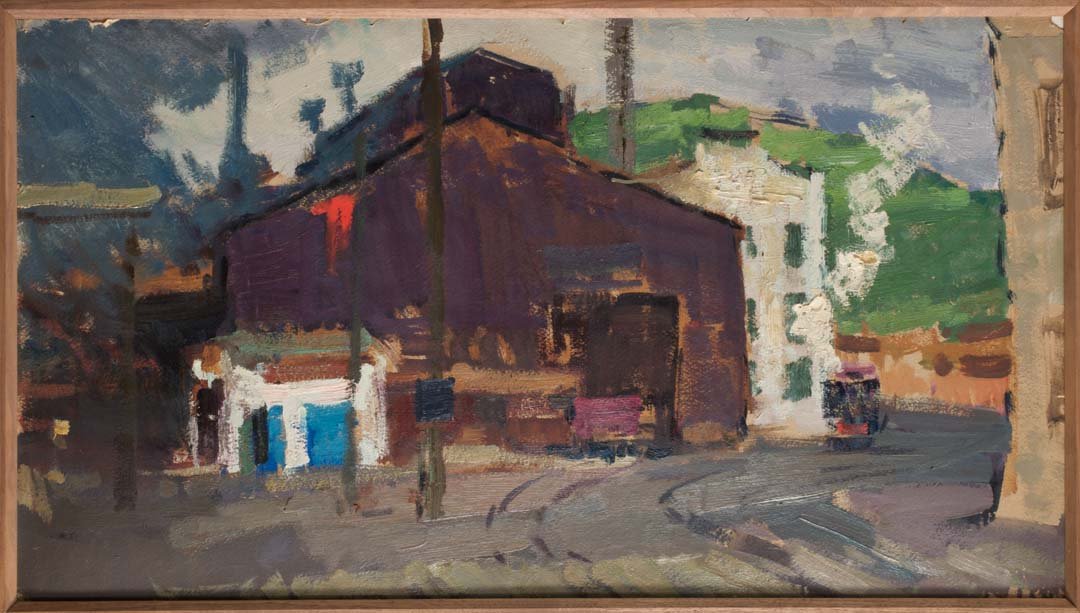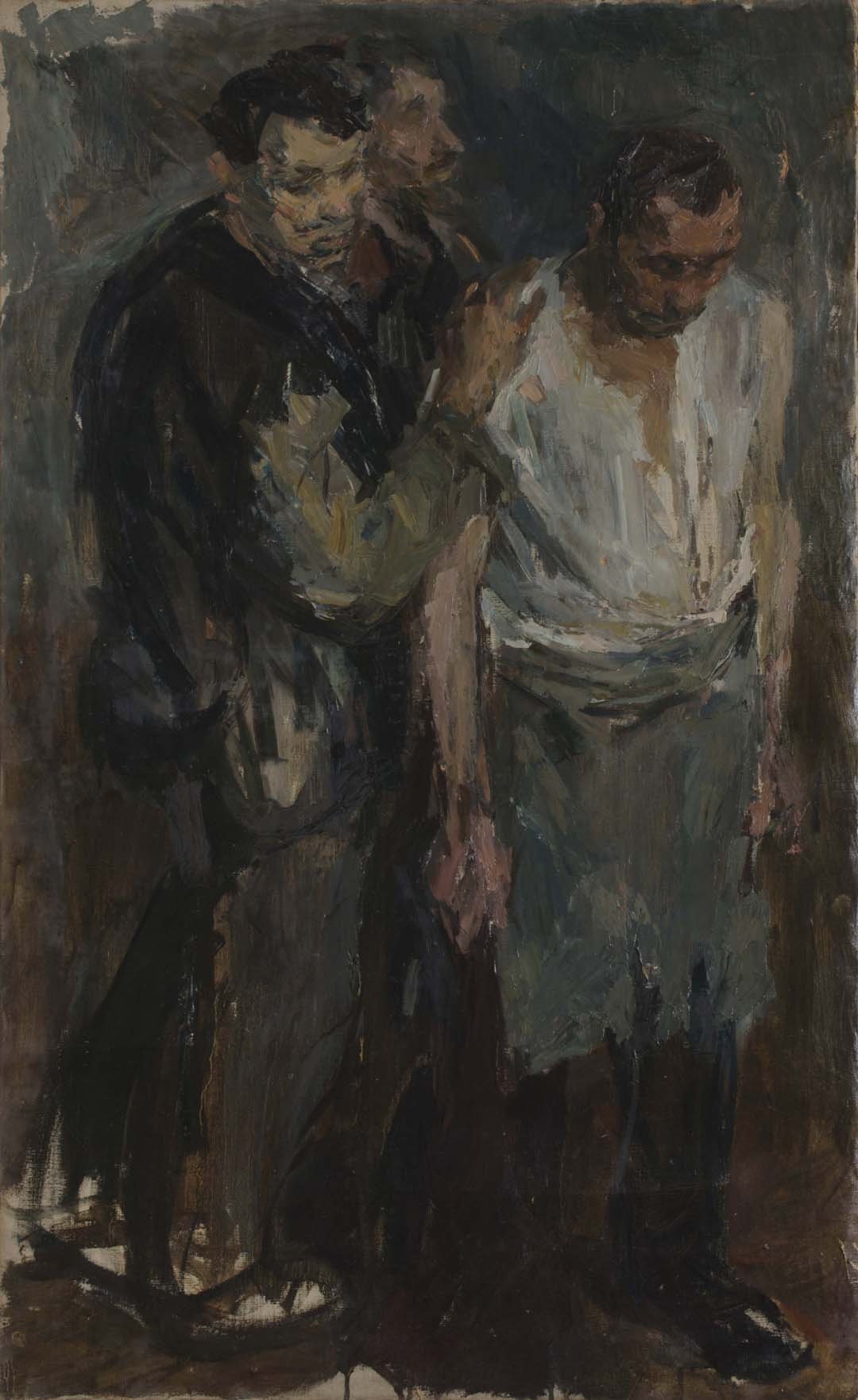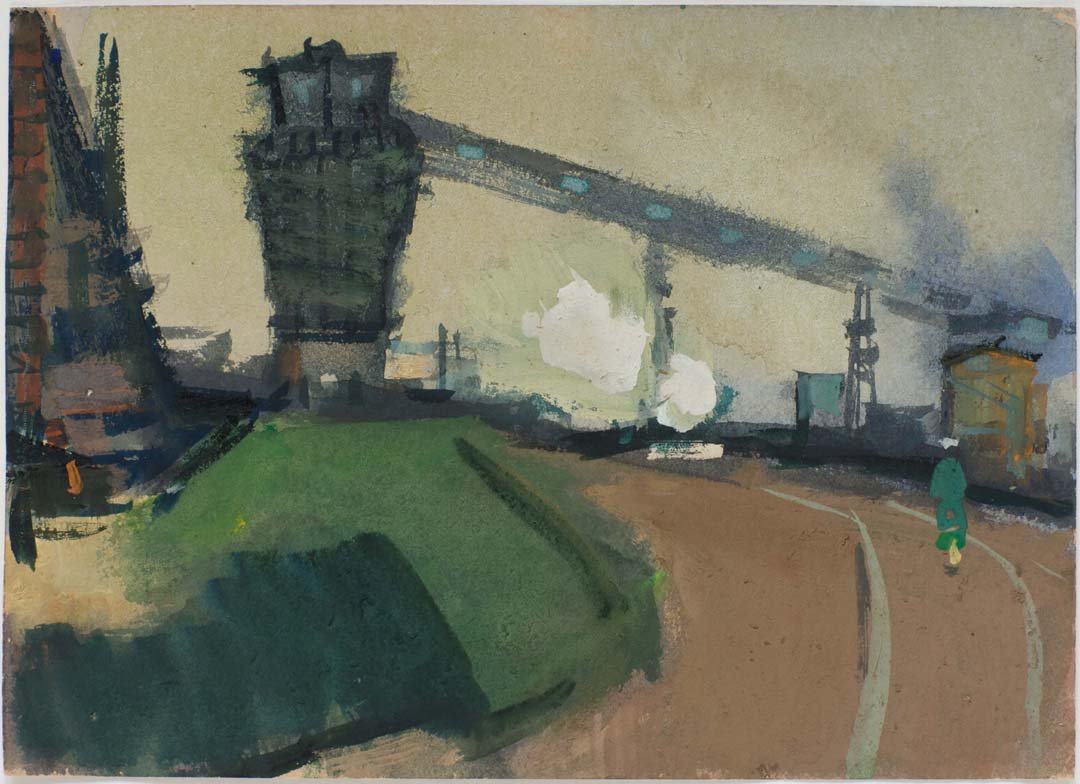Workers and Industry
Factories and people who work there
Woman Worker, 1954-1958. Oil on canvas
Old Fisherman, 1956. Oil on canvas
Portrait of the Miner Sharafeev, Urals, 1958. Oil on canvas
The Yard Keeper Katya, Leningrad, 1959. Oil on canvas
Portrait of a Worker. Nizhny Tagil, 1958. Oil on canvas
Portrait Study, the Urals, 1958. Oil on canvas
Lithopone Workshop, Urals. 1958–59. Oil on canvas
Worker in the Urals, ca. 1958 - 61. Oil on canvas
Nizhny Tagil, 1958. Oil on board
Nizhny Tagil, 1958. Oil on canvas
The Urals, 1958
When asked what I needed in the Urals, I said – nothing. Soldiers sit in the damp trenches, so can the artist stand in an industrial workshop and paint—the workshop is his studio—and do everything he can for his country.
Felix Lembersky, remembering World War II in the Urals
speech, Leningrad 1956
Red Workshop, Leningrad, 1959. Oil on canvas
Workers of the Urals
During World War II
Tatyana Dmitrievna Yurchenko, Stakhanov shock worker of Plant 56. Nizhny Tagil, 1943. Watercolor and ink on paper, 13 3/4 x 10
This drawing was created for Album-Report on industrial progress during World War II. The caption notes: “Tatyana Dmitrievna Yurchenko fulfilled the plan of two years by processing over 300 thousand shells above the norm in 1944.”
I will tell you what I saw. We had to complete an album [images of the industrial home-front] and went to the plant in Nizhny Tagil to make sketches. I stayed at the plant till one in the morning, it is fourteen kilometers from the plant to town, trams did not run at that hour. I walked outside and saw a passing truck. I pulled myself up to get into the back and saw the bodies of two dead workers there. I saw the reality of that work achievement.
Felix Lembersky, remembering the Urals during World War II
Speech, Leningrad 1956
Strike at the Urals Plant
Graduate thesis painting. Completed in the besieged Leningrad, 1941
I want to show the internal state of oppression and the pensiveness that announces awareness. Man has broken free from the dark, and this movement has the potential to lead to change.
—Felix Lembersky
Thesis defense during the Siege of Leningrad, December 1941
In the Urals Mountains
Mining and ironworks of Nizhny Tagil
When an industrial worker saw my paintings, he came up to me and said: “It is important that you show our life and our shop in a way that we don’t see it ourselves. If you show what we see, why do we need your works of art?”
This is a deeply perceptive idea. A true artist must face the dilemma—either to blindly replicate nature, or turn away from faktologia, from copying insignificant minutia and unimportant things, and create the works of art that uncover hidden springs, that uncover new world.
Felix Lembersky, speech, Leningrad, 1956
The weather is marvelous, sun and the heat every day. I divided my work into three phases. First is watercolors, pastel, and landscape drawings.
I work a lot . . . the places where I paint are very far, the plants are very large, I often cover 15-17 kilometers per a day and come home exhausted. . . And yet. . . I am very satisfied and have never felt as I do now.
Felix Lembersky, letter to wife, Lucia, from Nizhny Tagil, summer 1958


























































